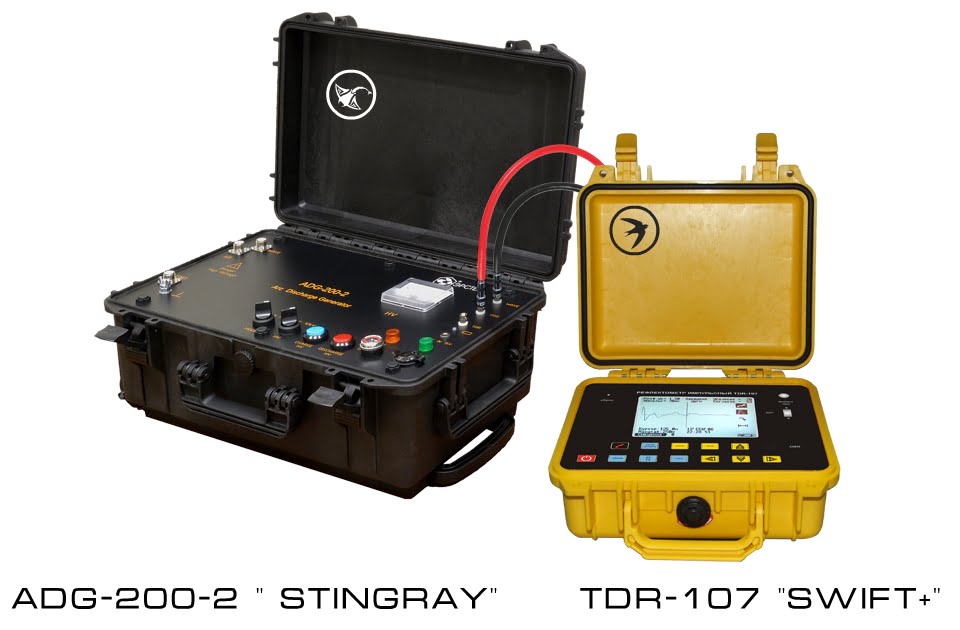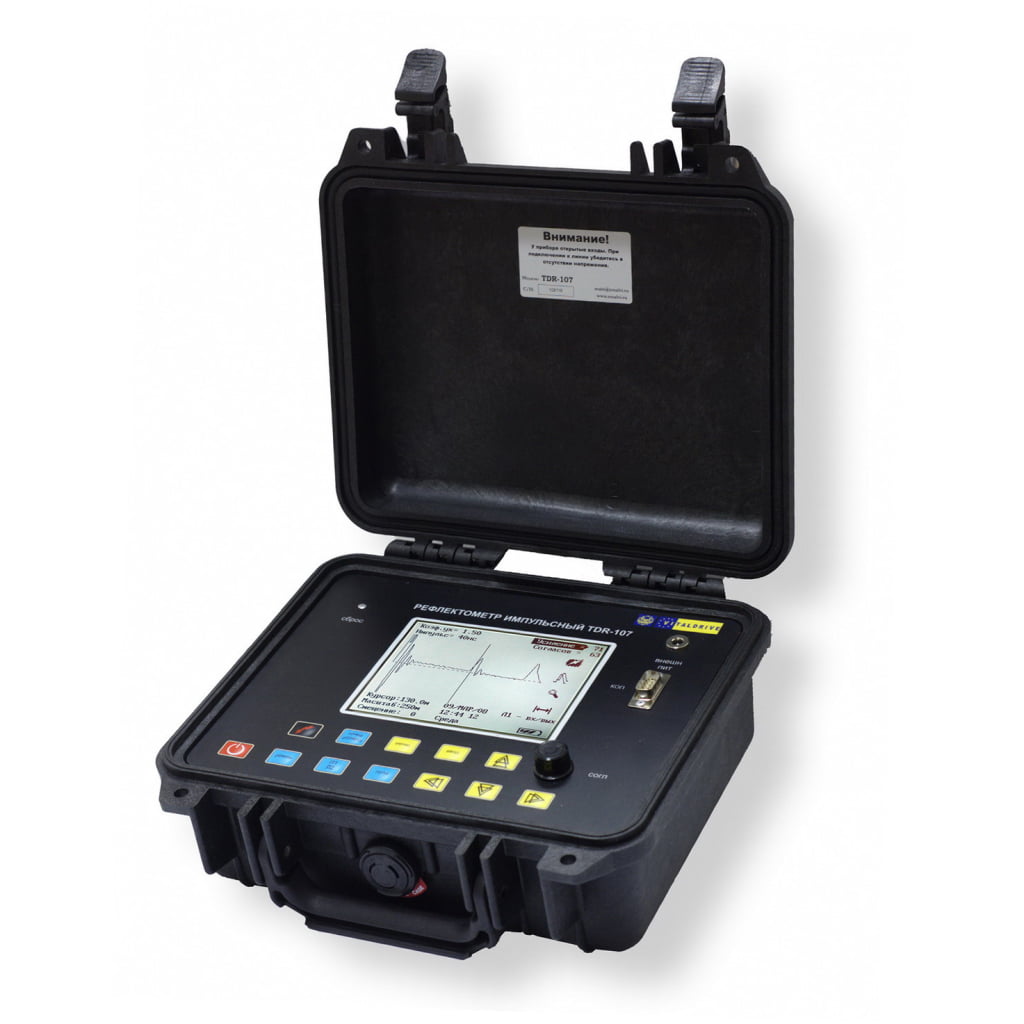
Kit purpose:
The implementation of modern High-Voltage methods of fault Pre-Location in a light-weight, compact, self-powered kit.
Preliminary localization of both low-resistance (<1 kOhm) and high-resistance (> 1 kOhm) cable faults by the following non-burning methods:
- Time Domain Reflectometry method (TDR)
- Arc-Reflection Method (ARM aka SIM)
Scope of application
Scope of application
Power Cable Fault Prelocation Kit TDR-107 “SWIFT+” & ADG-200-2 “STINGRAY” is used for control during the laying and operation of the following types of cable lines:
- power cables;
- copper-core communication cables;
- signaling and control cables;
- overhead cable lines;
- computer networks;
- television and radio frequency cable lines.
- to determine the length of the cable during its production, storage and trade.
Power cables of all types:
- Power cables with impregnated paper insulation in lead sheath
- or aluminum sheath
- Power cables with rubber insulation
- Power cables with PVC insulation
- Power cables with polyethylene insulation
in all electrical networks where the power cable is used:
- General-purpose electrical networks;
- Autonomous power supply networks;
- Repair and maintenance of water transport;
- Technological networks;
- Metallurgical industry;
- Mining industry;
- Railways;
- etc.
Heating cables of the main types:
- resistive type
- self-regulating type
- and etc.
in many industries:
- Department of Housing and Utilities
- Petrochemical industry
- Pipeline transport (oil pipelines, water supply / sewerage)
Features
Features
- The most careful Сable Fault Locating (CFL) methods – short-term (milliseconds) HV-impact on cable insulation does not damage cable lines :
- perfect for finding faults on cable lines with XLPE insulation (cross-linked polyethylene);
- perhaps the only CFL methods applicable to heating cables in mechanically and thermally insulated pipelines;
- Compact and lightweight .
the whole kit fits freely into the trunk of a car and can be easily moved to the connection point manually:- the possibility of using in hard-to-reach places (mines, wells), or in places inaccessible to the automobile Lab.
- Autonomous: autonomous power supply from powerful built-in battery or car cigarette lighter (special option);
- Waterproof : sealed cases – protection against adverse weather
Kit contents
Resources
Resources
TDR-107 User Manual
1 file(s) 1.02 MBCable Fault Locator TDR-107. Specification
1 file(s) 204.97 KBArc Discharge Generator ADG-200-2. Specification.
1 file(s) 225.87 KBADG-200-2 User Manual
1 file(s) 695.85 KB
Media


